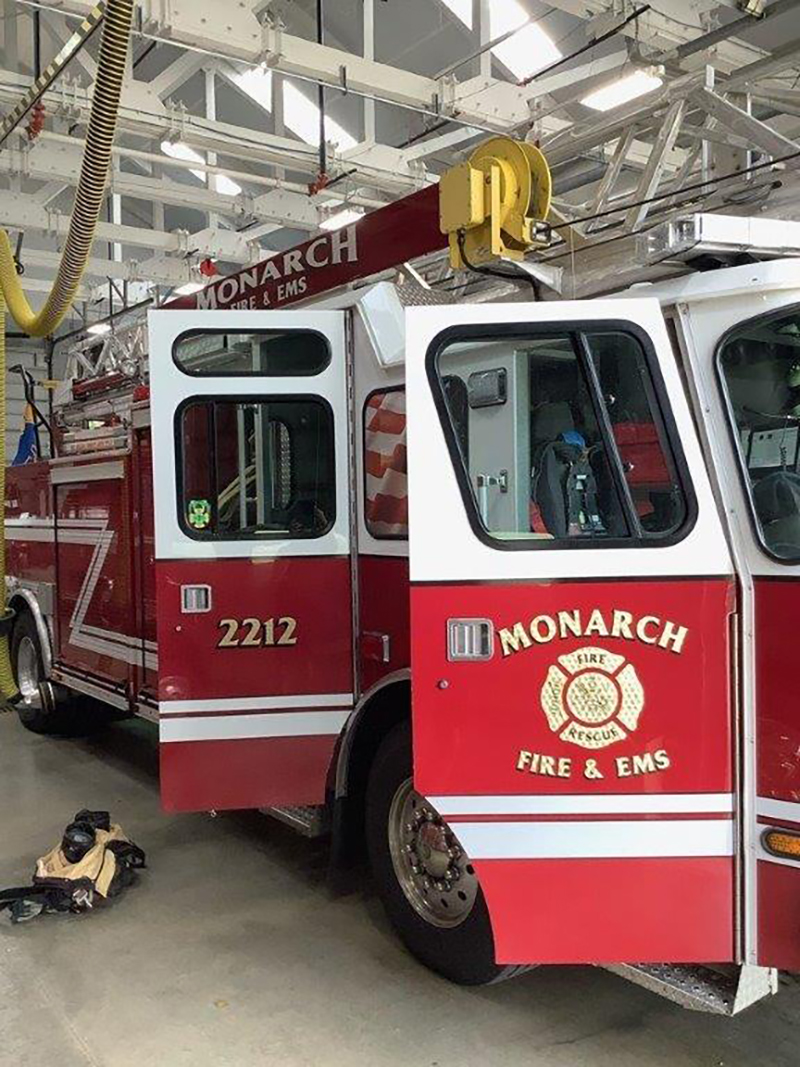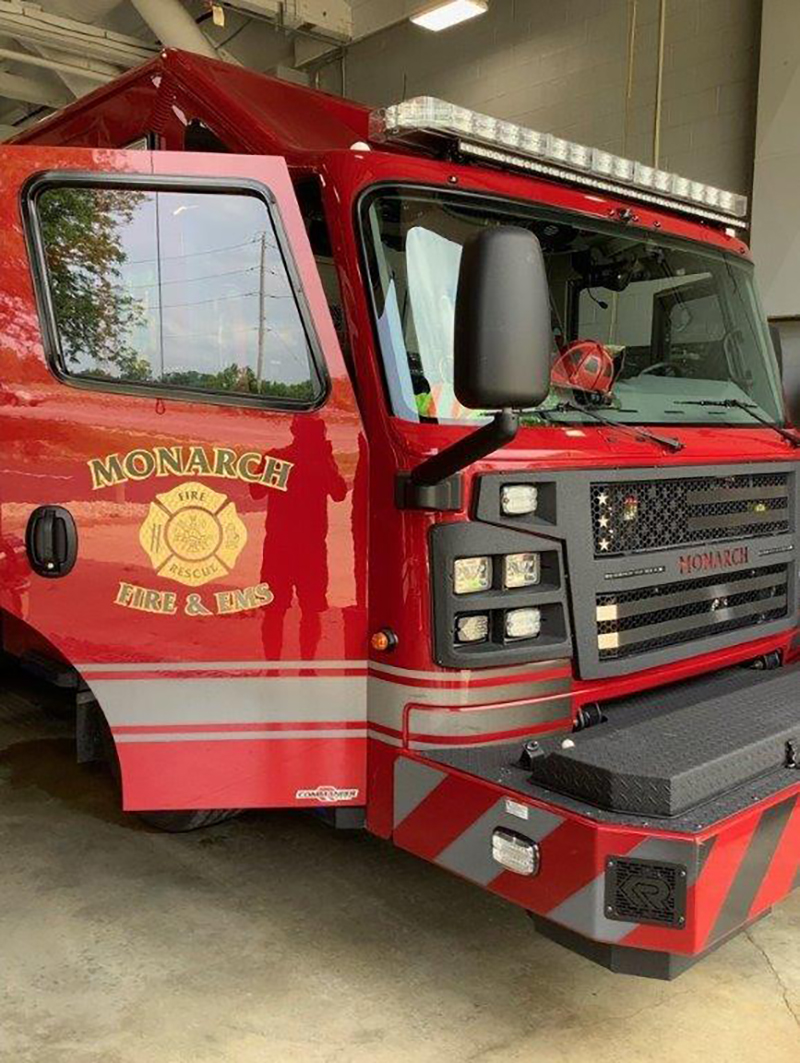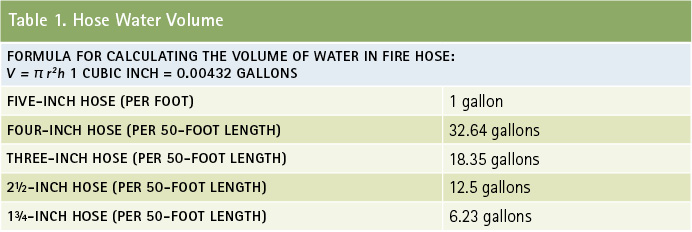TRAINING NOTEBOOK ❘ By DAN ALLEN
The engine company officer’s considerations and responsibilities begin at least a half hour before he begins his shift at the firehouse. Why? Because accepting the position also means accepting its responsibilities. Engine company operations are the essence of teamwork, and the engine company officer is both the coach and quarterback of a firefighting team that must be ready for “game day” at any moment. The officer doesn’t know when his company will go to work, but he does know that his leadership can make the difference.
Considerations of the First-Due Engine Company Officer on Residential Structural Fires
As a company officer, your mind must process such information as what piece of fire apparatus is sitting in the bay. Is it your regular apparatus or a piece of reserve equipment? As frontline equipment, spare rigs are not always as up to par. When an engine company arrives at work to begin a shift and finds a spare, it is the engine company officer’s responsibility to have the entire crew examine it thoroughly. Assume nothing, and leave no stone overturned. This is no time for mopping floors—the entire crew must have their eyes and hands on the apparatus and its equipment. Have your firefighters get into the hosebed and make sure that the hose will play out. Additionally, old, worn-out spare apparatus are notorious for not being able to draft, so know its limitations.
Fireground Questions to Ask
Do you have an engine or are you running a quint (photos 1, 2)? This may change things some because you now must think in terms of ladder placement. As you arrive on scene and set up for aerial operations, are you setting up at a corner of the building, and do you need to consider positioning your truck 1½ times the height of the building in case of a structural collapse? Is your priority the first-in engine duties? How much water do you have in your booster tank? Maybe you can be a little more aggressive and push a little further with 1,000 gallons of water instead of 300 gallons, which is a very common size booster tank for a quint.

(1) Photos by author.

In his article on quint operations (Fire Engineering, July 2020), Jason Hovelmann cautions companies operating with a quint using a “trunk line” when a fire is beyond the reach of a 1¾-inch preconnect such as a courtyard stretch. For example, Table 1 in his article (below) shows that 50 feet of three-inch hose contains more than 18 gallons per 50-foot section, requiring a lot of tank water to fill a long stretch. Consider the rig’s pump capacity; it will be a vital factor in determining hoseline deployment strategies.

What size and how many handlines are available? In my fire district, our apparatus has two 1¾-inch 200-foot preconnects, one with a 15⁄16-inch smooth bore nozzle, the other with a fog nozzle; one 2½-inch 200-foot preconnect line with a 13⁄16-inch nozzle; a 100-foot 1¾-inch trash line on the front bumper; and a booster reel.
Ask yourself, How much do your hose and nozzles flow? We keep our fog nozzle preconnects at 200 gallons per minute (gpm) for more punch with our initial attack. Meanwhile, our trash line is set at 125 gpm for car fires. Modern passenger vehicles are largely plastic and carbon fiber, making a booster line unsafe and ineffective. Flowing 125 gpm will empty a 500-gallon booster tank in less than five minutes. To increase the suppression capabilities of this limited water supply, consider the use of foam and, if using an in-line foam eductor, ensure that the gpm flow of the nozzle matches the flow of the eductor (photo 3).

What is your number of personnel for the day? Do you have a three- or four-person engine? The answer will change an officer’s tactical planning. Keeping personnel in mind, how many pieces of apparatus are you running out of your station? We run a quint, an ambulance, and a rescue squad out of our house. Our emergency medical services (EMS) crews are cross-trained as firefighters as well, so the initial EMS crew on a structure fire will most likely be assigned to fire attack.
Knowing Your First-Due Area
A good engine company officer knows his first-due or “still-alarm” area. Is it all residential with legacy or conventional construction? In many areas, conventional construction uses manufactured I-joists, which will fail much quicker under fire conditions than legacy construction will. Are there multifamily apartments, multistory condominiums, or multistory retirement communities? Those types of buildings have a higher potential for multiple invalid rescues in the event of a fire.
How many nursing homes are in your response area? Fires in these facilities are very staffing intensive and will require multiple alarms and mass-casualty incident responses. Are there any strip stores in your area? Do they have fire walls between the occupancies? How many commercial warehouses are in the response area? Large commercial warehouses present special hazards, with stored hazardous materials and differing construction types (i.e., tilt-up buildings and truss roofs prone to early collapse). Are there any manufacturing facilities that store and use hazardous materials on site?
For example, in our district, we have a chemical company with 12 buildings, a maze of buildings with hundreds of potential problems. These problems can be mitigated. However, if the engine company officer establishes a working relationship with plant managers over “target hazards” in his first-due district, the officer should explain to them how important it is to designate an employee to meet arriving fire companies at a designated location such as a particular entrance gate. In addition, are your water supply systems efficient? Do you cover a nonwater area where you must shuttle water or do you have 24-inch mains in industrial areas? Do you cover any airports with underground fuel storage areas?
Engine Company Officer Traits
A conscientious engine company officer keeps in mind his first-alarm assignments regarding various structures. In my county, a residential first-alarm assignment consists of six engine/quint combinations, a squad (if one is normally assigned), two EMS crews, and two battalion chiefs. For commercial structures, an extra engine/quint is added. Each additional alarm brings a duplicate of the first-alarm complement of units and chief officers, which may vary some per each department).
- Engine Company Leadership
- First-Due Tactics for the Urban Engine Boss
- First-Arriving Decisions
- Off-the-Beaten-Path Engine Company Tips
A good company officer also possesses excellent communication skills. Departments should strive to use the same terms as their mutual-aid departments such as “Alpha,” “Bravo,” “Charlie,” and “Delta” to describe sides of the building and divisions being floors of a multistory building. Many departments also use the term “doing a 360° size-up around the building,” which simply means that the first-in company officer is walking around the structure to get a four-sided view of what is going on. If your department doesn’t use a communication model similar to this, do so since it helps keep communications clear and concise.
The Response Scenario
As the good engine company officer works through his day with training, house duties, and public relations, the alarm comes in. Engine 1 is dispatched with a full complement of equipment to a commercial first alarm to an apartment fire with reported persons trapped on upper floors. As you don your full personal protective equipment and self-contained breathing apparatus, you check your onboard dispatch computer for the best route to the scene, correct address, and closest hydrant. All responding units are advised that on-scene police are reporting multiple victims on balconies attempting to evacuate.
What is your plan? What are your considerations? Initially, you will need extra personnel, so request an additional alarm for multiple rescues. What will be a priority, victim rescue or establishing a water supply and getting water on the fire? Engine officers must position their apparatus with consideration to keep the building accessible for later-arriving aerial apparatus.
You are first in and give your initial radio report of a large, four-story apartment building with heavy fire and smoke on Division 2, center apartment. It is extending to Division 3, and multiple victims are on decks awaiting rescue. What is your plan? You have arrived in your quint with your squad and EMS unit and assigned them to throw ground ladders from your quint to adjacent decks for rescue. You also assign your crew to stretch a 2½-inch hoseline to the fire apartment for fire attack using a transitional attack.
What’s next? Do you do a 360° size-up, or is the building too large? You surely need to get eyes on the C side of the building. Your next-due suppression unit is an engine, so you assign them to dump their booster tank into yours and assist crews with victim rescues and have the third-due establish a water supply to your truck and assist with fire attack. Also consider the placement of other apparatus arriving on the scene. Should you have other suppression equipment come in from another direction so as not to block streets from other needed aerial equipment or EMS crews for treating and transport injured victims? Where do you set up a rehab area for firefighters and a rapid intervention crew (RIC)? Do you need more than one RIC?
Eventually, both you and the battalion chief transfer command, preferably with a face-to-face report, briefing the chief on conditions, actions, and needs. You are now reassigned to your crew, which is continuing with fire attack. Through a concerted effort of all crews, all occupants are safe, the fire is confined to just a portion of the building, and all companies safely return to quarters.
The engine company officer has a lot of responsibilities, both at the firehouse and on the fireground, so training and learning must be endless. From the probationary firefighter to the seasoned veteran firefighter or company officer, you must prepare every day as you walk into the station until the time that you walk out of the station by training, reading, attending classes, and drilling on different scenarios. The day that you think you are fully trained and ready for everything is the day you should retire.
DAN ALLEN is a 39-year fire service veteran and has served as a captain/paramedic with the Monarch Fire Protection District in Chesterfield, Missouri, since 2009. He is also an assistant shift training officer, a teacher at the St Louis County (MO) Fire Academy, and a member of the International Society of Fire Service Instructors and International Association of Fire Chiefs Company Officers Section.

